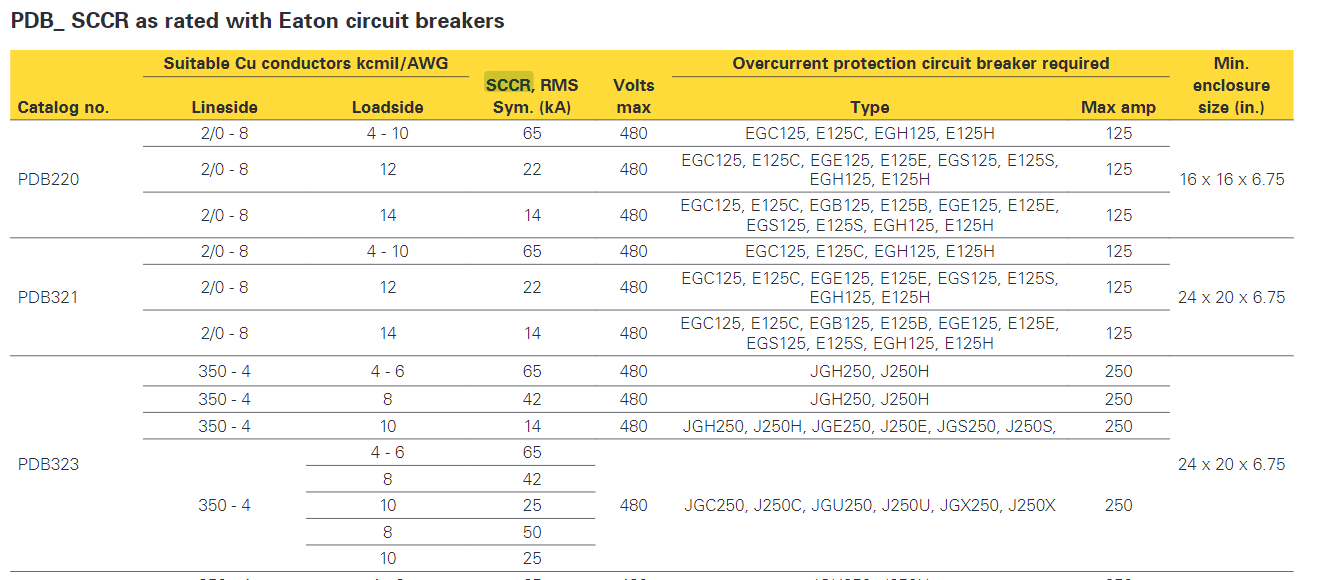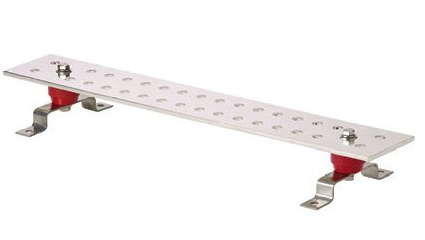There are actually two important design considerations when selecting a busbar:
a) continuous amperage rating
b) short-circuit current interrupt rating (SCCR)
Most busbars do not have SCCR ratings. Regarding busbars, the SCCR rating is primarily driven by the size of the wire connected to the busbar. If you need a bussing system with a listed SCCR rating, you may need to select a Power Distribution Block (PDB) with port terminals. SCCR ratings may also be impacted by the size of the enclosure in which the PDB is installed.
PDB Illustrative Example
SCCR ratings may also be available for crimp terminal lugs. Here is a good article on the topic:
https://lugsdirect.com/SCCR-UL508.htm
If continuous ampacity rating is the only desired component specification, it is common to find busbars listed up to 1000A with up to 12 mounting ports or stud terminals (ex. BlueSea, Victron, Marathon Specialty Products) with some power distribution blocks rated for slightly higher amperage.
Beyond this amperage threshold, busbar selection becomes a custom solution. Busbar ampacity fore bare copper bars (commonly tinned) can be calculated based on NEC 366.23, defining the ampacity not to exceed 1000 amps per square inch of busbar area. A commonly distributed example of a tinned, bare copper bar is an "insulated grounding busbar". These busbars commonly have a 1/4" thickness with a 2" or 4" width. Such busbars would have a 500A or 1000A rating, respectively. Ergo, sandwiching two 4" insulated grounding busbars together can form a 2000A busbar.
Examples: https://www.panduit.com/en/products/grounding-bonding/grounding-busbars-strips/grounding-busbars.html
A few considerations are necessary when building a busbar system out of bare copper bars:
3) 4" busbars are intended for 2-hole crimp lugs. 2" busbars are intended for 1 hole crimp lugs.
Last but not least, cable management between the batteries, inverters, and busbar system can be difficult.
It may be easiest to have multiple busbars - for example having separate busbars for equal-sized groupings of batteries and inverters. Conductors (or more likely, parallel sets of conductors) would then be run between these busbars or recombined at a main busbar.
Conclusion
If project requirements mandate the use of high ampacity busbars, the most inspector-friendly solution outside of fabiracting and listing a custom busbar would be to:
A) utilize listed busbar solutions to combine equal size groups of batteries and/or inverters.
B) utilize insulated grounding busbars to "recombine" the lower ampacity busbars together liberally oversized per NEC 366.23
C) consider in-line fuses between these busbars and "recombining" higher ampacity busbars to reduce SCCR requirements
D) Propose solutions to local AHJ as part of permitting rather than waiting until inspection



